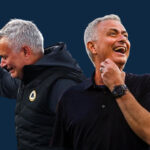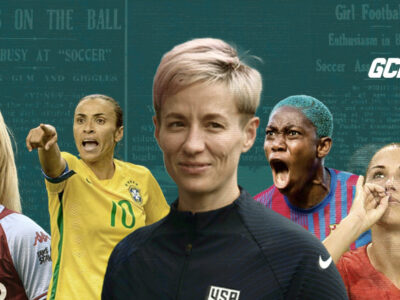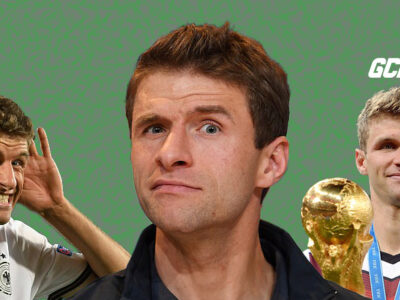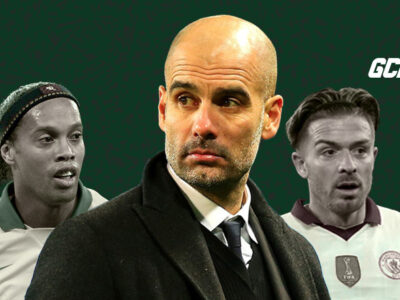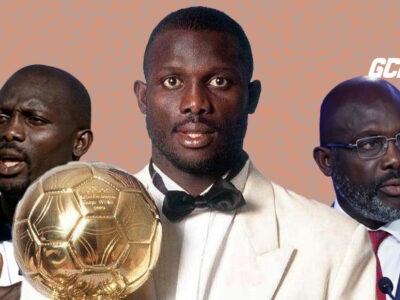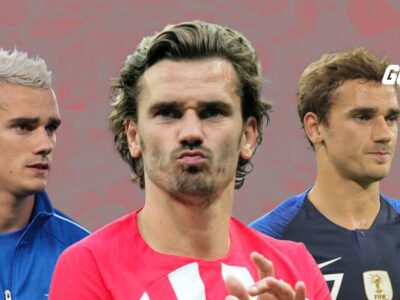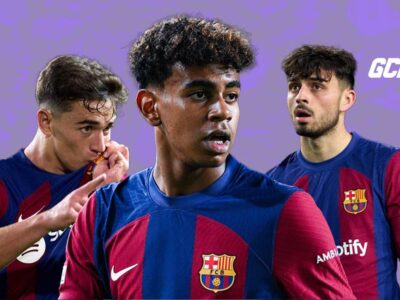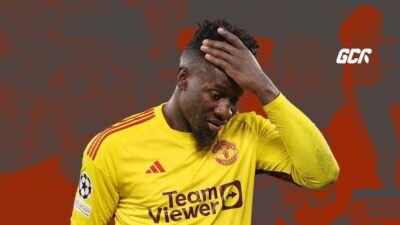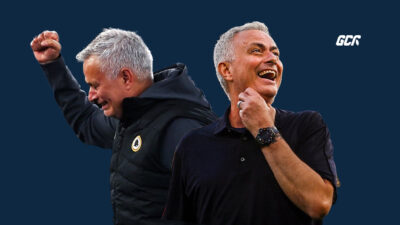Not too long ago, football clubs reserved their deep pockets for generational talents like Zizou, R9, and Drogba — the legends who defined eras with their sheer brilliance.
Sadly, those golden days have disappeared well into the horizon. Nowadays, any footballer and their grandmother could drive millions of euros in transfer fees.
And it may be easy to chalk it down to inflation and call it a day. But that doesn’t explain the accompanying issue of the high failure rate of big money transfers in football.
With media-spectacle moves like Pogba to Manchester United, Lukaku to Chelsea, etc., not leading to much on the football field, I think it’s time to explore why big money transfer prices are becoming increasingly bad investments.
Overview
PSG broke the transfer market when they signed Neymar in 2017. Since then, the pricing system has been out of whack.
Bang-average players from obscure command the price of entire teams playing in Europe. For context, Red Star Belgrade is worth around €70 million.
But even amongst the certified ballers, the 80-million-euro curse has become a nightmare anytime a high-profile move goes through.

Since the history of association football, 40 transfers have gone over the €80 million fee.
Here are the ones that performed above par during their stints:
- Neymar (€222 million, *€88 million)
- Kylian Mbappe (€180 million)
- Cristiano Ronaldo (€117 million, **€94 million)
- Declan Rice (€116.6 million)
- Jude Bellingham (103 million)
- Gareth Bale (€101 million)
- Harry Kane (€95 million)
- Frenkie de Jong (€86 million)
- Virgil van Dijk (€84.65 million)
- Dusan Vlahovic (€83.5 million)
- Luis Suarez (€81.72 million).
That’s 11 undeniably world-class players out of 40.
Suffice it to say that these big money transfers have approximately a 27.5% chance of becoming world-class talents. (Obviously, it is still too early to judge Kolo Muani and Gvardiol).
* Neymar’s transfer to Barcelona.
** Ronaldo’s transfer to Real Madrid.
Let’s Start From The Premier League: The Biggest Spenders
The English Premier League has recently become a gold mine for those seeking to strike it rich in the transfer market.
Let’s look at some instances.
You have players like Pogba going to Manchester United for €105 million in 2016 and Grealish heading to the blue side of Manchester for €117.5 million.
Chelsea just snapped up Moises Caicedo for a record €116 million.
As outrageous as that fee sounds, it raises more eyebrows when you realize that Caicedo only had 45 appearances in the league and 52 in all competitions for Brighton. And that was over the three seasons he spent there before Chelsea paid the king’s ransom.
But how have these big-money moves fared for their clubs?
Let’s crunch some numbers.
The Director of Research at Liverpool FC, Dr Ian Graham, highlighted the sobering reality of transfer success rates in football.
Citing reasons like the new player’s inability to fit the team’s style, their fitness post-purchase, buyer’s remorse, etc., he stated that only half of all transfers are successful.
Even with the most optimistic probabilities factored in, Graham’s calculations reveal that a random coin toss boasts a 2% better chance of yielding success than the outcomes clubs often encounter in the high-stakes world of football transfers.
Add the astronomical fees football clubs play for these transfers, and you have a dicey investment.
Having gotten an idea of how bad the situation is, let’s use specific examples to get a better vantage point of why these big money transfers fail in football.
Right player, wrong team
Sometimes, the right player finds themselves trapped in a mismatch of playing styles and tactical philosophies.
A high-profile case is João Félix, the Portuguese ‘eternal’ prodigy in Diego Simeone’s Atlético Madrid.
With his sublime technical skills, deft dribbling, and eye for goal, Felix epitomizes the modern attacking midfielder.
When he switched Benfica’s red and white jersey for Atlético’s, the transfer raised a few eyebrows because his personality never matched the gritty Simeone ethos. And the €127.2 million price tag didn’t help issues.
📸 – Joao Felix returned to sit on the bench. pic.twitter.com/cXrovw47BN
— 𝐀𝐅𝐂 𝐀𝐉𝐀𝐗 💎 (@TheEuropeanLad) September 18, 2022
But Atlético Madrid, under the stewardship of the pragmatic Simeone, probably saw something we couch experts didn’t.
Simeone’s tactical blueprint revolves around defensive organization, counter-attacks, and grinding out results — a stark contrast to Felix’s free-flowing style and penchant for creativity.
Despite always maintaining his brilliance, Felix has sometimes been shackled by defensive responsibilities and tactical constraints that stifle his instincts.
It’s no wonder the player made his love for arch-rivals Barcelona an open secret.
Now on loan with the Catalonian giants, Felix enjoys Xavi’s flair-driven, front-footed, possession-based approach.
And netting against his parent club in a match in December 2023 adds an exclamation mark to the argument that João Félix’s plus Atlético is a classic case of the right player on the wrong team.
On the flip side, Griezman’s €120 million adventure at Barcelona was more remarkable for his hairstyles than his output on the pitch. Since coming back to Atletico, he has returned to his best.
Injuries and unforeseen circumstances
In the disruptive world of football, unforeseen circumstances always lurk in the shadows, harboring injuries and personal challenges.
These setbacks can derail even the most promising trajectories, casting a shadow of doubt over the hefty investments made by their clubs.
Regarding injuries, few stories are as sad as Eden Hazard‘s unprecedented decline. Once the dazzling jewel in Chelsea’s crown, an ankle injury became an unwelcome companion, halting his journey at Real Madrid and football entirely.
Nobody could have predicted that a non-malicious tackle by Meunier that Champions League night would mark the beginning of the end of one of the most bedazzling football careers in the modern era. Yet it happened!
On the other hand, players like Paul Pogba battle a few extra demons resulting from a long litany of personal issues.
If found guilty, Pogba could face a lengthy ban from footballhttps://t.co/6jihwKWnxq
— FootballJOE (@FootballJOE) September 11, 2023
A turbulent relationship with the media, a fractured relationship with his family, and run-ins with criminals contributed to Pogba’s downward spiral after United splurged to get him back to Old Trafford.
Publicized or kept behind closed doors, these personal tribulations can weigh heavily on a player’s psyche.
On returning to Juventus, a failed doping test saw Pogba banned from football for the near future, essentially flushing any financial returns the club hoped to get from him down the drain.
Issues with managers or club hierarchy
Clashes between players and managers can also spell disaster for even the most promising talents.
Jadon Sancho’s high-profile move to Manchester United for a staggering €85 million quickly soured under the weight of a ruse with manager Erik Ten Hag.
The rift peaked when the Dutchman publicly criticized the forward’s seriousness in training, igniting a contentious exchange of words that echoed throughout Old Trafford.
The situation led to Sancho finding himself exiled from the first-team squad. Ultimately, the player’s loan back to Borussia Dortmund was the only move left on the card for both Sancho and United, emphasizing the perils of interpersonal conflicts within professional football.
In a similar fashion, Ousmane Dembele’s discipline has been an issue since his days at Borussia Dortmund. And when you combine that with injuries, you get the quintessential recipe for a footballing disaster.
Too much social media hype
With social media interactions and opinions becoming closer to reality than the grass outside, most people spare no words when hyping their favorite players.
The moment transfer rumors start flying, you can expect tens of welcome videos on YouTube showing the absolute best versions of the players.
And since highlight compilations can make Manchester United’s Antony look like prime Robben, they seemingly justify why clubs should spend astronomical amounts for their services.
But there’s a downside to those lofty expectations.
Take Romelu Lukaku, the Belgian powerhouse, for example. Everton cashed in a whopping €88 million to pass him on to Manchester United.
That’s a hefty sum, but it wasn’t just a transfer. It was a weighty ceremony, a crown of expectations squeezing Big Rom into the underbelly of internet memedom.
Even though the striker scored 42 goals for United, it was never enough for the fans, who got into the habit of comparing his performances to his perceived value.
Then you have players like Fernandez and Caicedo, who cost Chelsea a combined €237 million. Both have attracted comparisons to legends like Lampard and Kante despite not spending a full year at the club. Whether or not they live up to the hype is anyone’s guess.
However, one thing is sure: the list of young players crumbling under the weight of their price tags after being hyped to the heavens has continued to grow.
Overpriced players
With many players over the 80-million-euro mark turning out to be flops, could the pricing system be the culprit here?
Hold Harry Maguire, the former anchor of Leicester City’s defense, by the same standards as you would any other defender, and it’s hard to justify his transfer fee to Old Trafford.
Manchester United dished out a record-breaking €87 million for him. Yes, he was a good servant of the Foxes, but was he ‘€87 million’ good?
The most likely answer you have to that question contributed to why defensive errors, as common as rain in England, became thunderstorms in the eyes of critics once Maguire was involved.

Many blame it on the ‘English tax,’ a fancy way of referring to the trend of certain players’ market values skyrocketing just because they were locals.
Jack Grealish’s move to Guardiola’s City is another example of the curse of overpriced English footballers. Players like Grealish and Maguire were solid midtable performers, but nothing the fans had never seen before.
However, due to no fault of their own, the allure of homegrown talent and potential prompted clubs to break the bank for their signatures.
Now, they may as well play with targets on their backs. Fans and critics expect fireworks and weekly man-of-the-match performances just for them to justify their transfer fees and remain at levels they were frankly never at.
And what do we get? A vicious cycle of bad performances and public lambast.
Stiff competition for places
Manchester City and Real Madrid are the key players in this high-stakes game, shooting euros and pounds out of cannons and straight into players’ laps.
So when they splurge on multiple players, the competition for spots is cutthroat. Hazard had to make way for Vinicius.
Even 80-million-euro World Cup finalist Aurélien Tchouaméni has to bide his time on the bench behind Kroos, Modric, and now Bellingham,
🚨| Camavinga STARTS, Tchouaméni is on the bench. #ElClasico 🇫🇷 pic.twitter.com/FhkhA1PYRU
— Madrid Zone (@theMadridZone) March 19, 2023
Then came Philippe Coutinho, Liverpool’s wonder boy. Barcelona thought he was worth a princely €160 million. But little did they know, it wasn’t a ticket to paradise for the Brazilian magician.
From the moment he donned the Blaugrana, he faced a different kind of challenge — the all-seeing critic eye. His every touch was scrutinized, as if each pound spent demanded an extra dribble or an impossible goal.
And with the harrowing comments doing rounds on platforms like Twitter, it’s easy to see how they could affect the player mentally, further ruining any chance of replicating the numbers he achieved at Anfield.
In short, Philippe Coutinho was never going to replace Messi.
At Arsenal, Nicolas Pepe had to make way for homegrown Bukayo Saka after several uninspiring seasons at the Emirates.
Football is a brutal business, after all.
So why do big money transfers fail?
So here is a breakdown of players who fell victim to the 80-million-euro curse and how it affected players.
- Right player, wrong team: Coutinho (Barcelona), Romelu Lukaku (Chelsea), Kai Havertz (Chelsea).
- Unforeseen circumstances: Enzo Fernandez (Chelsea), Moises Caicedo (Chelsea)
- Not good enough: Jack Grealish (Manchester City), Kepa Arrizabalaga (Chelsea), Antony (Manchester United), Harry Maguire (Manchester United), Arthur Melo (Juventus), Nicolas Pepe (Arsenal).
- Managerial disputes or disciplinary issues: Dembele (Barcelona), João Félix (Atletico Madrid), Jadon Sancho (Manchester United), Paul Pogba (Manchester United)
- Injuries: Eden Hazard (Real Madrid), Wesley Fofana (Chelsea)
This list is not exhaustive, as there are other reasons why high-profile transfers in football often don’t succeed. Unfortunately, the players bear the brunt of the fans’ wrath when they fall flat under the weight of expectations that follow.
But here’s the twist. It’s not just about these stars; it’s about the ripple effect of these transfers. Instead of focusing on improving, these lads tiptoe down a narrow path lined with judgmental eyes. They are always on a cautious march to meet the numbers they’re supposed to be worth.
And what about the fans? They used to wear their players’ jerseys with pride, but now it’s like they’ve bought shares in a business. Loyalty is tested, and patience wears thin.
In these high-stakes transfers, football has slowly become less of a love affair and more of a financial transaction, and the exchange rate isn’t always fair.
Who wrote this?
Precious is a lover of football, a peddler of banter, the master of all sports, and the practitioner of none. He's spent over 15 years discussing football in pubs and schoolyards.






